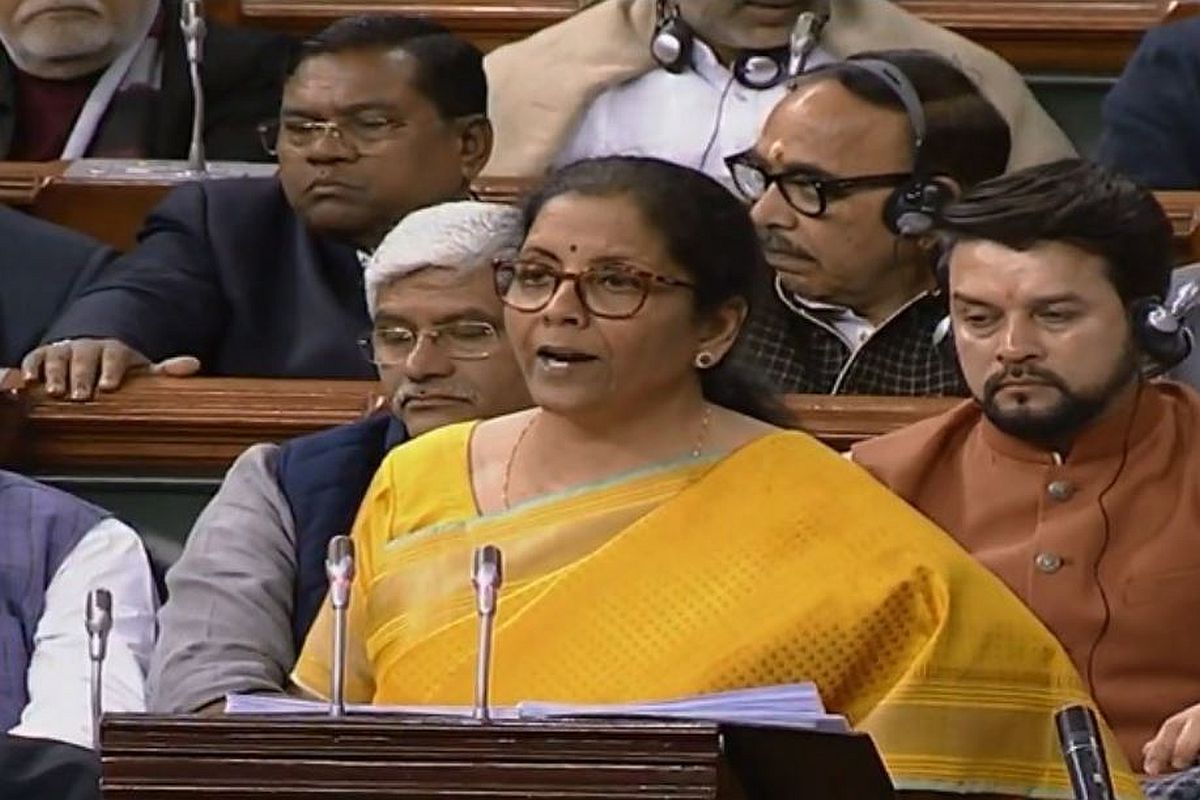Finance Minister Nirmala Sitharaman on Saturday presented the Union Budget of the second term of the Narendra Modi government.
This was the second budget for Sitharaman, who became the second woman finance minister after Indira Gandhi to do so in the history of independent India.
Advertisement
Sitharaman presented the full-year budget for the year ending March 2021 in the Lok Sabha.
Like the previous Union Budget, Nirmala Sitharaman has this time too replaced the Budget briefcase — the iconic briefcase used by former finance ministers — with the traditional “bahi khata” in keeping with Indian tradition.
The “budget case” tradition started in the 18th century when the Chancellor of the Exchequer or Britain’s budget chief was asked to ‘open the budget’ while presenting his annual statement.
Ahead of the Budget presentation, the finance minister and her team comprising MoS Finance Anurag Thakur and other officials met President Ram Nath Kovind.
The Economic Survey 2019-20 tabled in the Parliament on Friday has projected India’s economic growth at 6 per cent to 6.5 per cent in the next financial year starting April 1. The projection indicates that the growth has bottomed out. The survey pegged the FY20 growth rate to 5 per cent.
The survey was released by Chief Economic Adviser Krishnamurthy Subramanian.
Prime Minister Narendra Modi seems keen to present a Budget that goes beyond incrementalism and gradualism.
On January 6, he held a series of meetings with Indian Inc, economists and experts on the Union Budget for 2020-21.
As a measure to boost domestic small and medium industry, the government may consider a hike in customs duty on over 300 items like toys, furniture, footwear, coated paper, rubber items among other in the Union Budget.
Besides giving relief to the domestic industry and boosting employment, the move to keep imports down and help to raise revenue. Many of these are industries which are essentially concentrated in the small and medium sectors and employment-intensive.
The Commerce and Industry Ministry in its budget recommendations has proposed rationalisation of basic customs on over 300 items across sectors including furniture, chemicals, rubber, coated paper and paper boards.
The Congress on Saturday, meanwhile, expressed hope that the Union Budget would provide relief to the salaried class through tax cuts and invest in rural India besides providing a healing touch to the common man and industry facing “hardship” since demonetisation.
Congress chief spokesperson Randeep Surjewala said the last budget led to crashing consumption levels, soaring unemployment and falling GDP.
The Union Budget is the financial statement of the government, detailing its revenue and expenditure in the past, as well as estimated spending and projections for the coming year.
Sitharaman had presented her maiden budget in July last year, shortly after the BJP-led government came back to power in the Centre in the 2019 Lok Sabha elections.
Till 2016, the Union Budget was presented on the last working day of February. Former finance minister Arun Jaitley had changed the tradition in 2017 when the Union Budget was presented on February 1.









